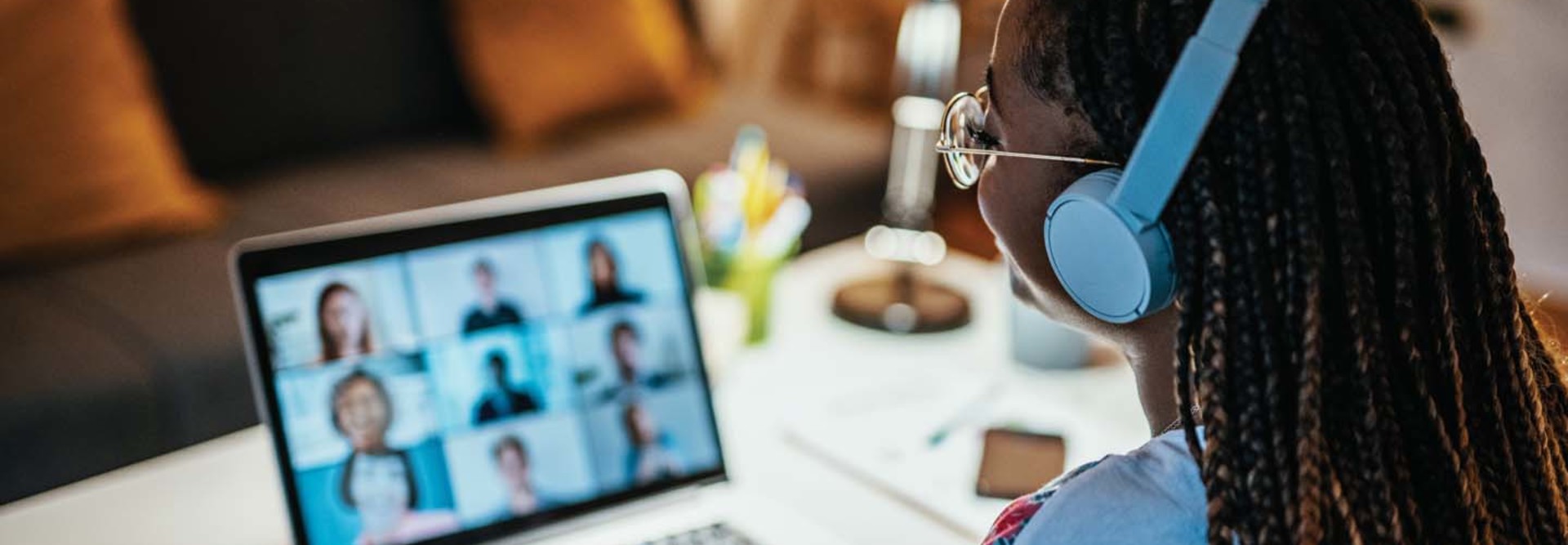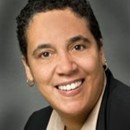School can be just one of many responsibilities a minority student has. In fact, with fewer than 1 in 4 Black Americans living in nonfamily households, over a quarter of Asian Americans living in multigenerational homes and Hispanic Americans spending 1.4 times more time caring for family than white Americans, family responsibilities can often conflict with class schedules, study groups or lab assignments — something online learning helps counteract.
“There may have been increased flexibility in some online courses that created opportunities for students of color to prioritize other aspects of their lives,” Pope says, “such as family, work or community.”
Minority students aren’t the only marginalized group that can benefit from online learning. The transition to virtual classrooms has also impacted students with disabilities.
Nicholas Gelbar, associate research professor at the University of Connecticut and psychologist at Educational Testing and Consulting, describes the traditionally hectic scene at the end of the first class of an in-person course. “There’s this rush of people coming up to me, and everybody knows what it is. They’re all here about to hand me the letter that says, ‘I have these accommodations, can we work out what that is?’”
Because of this, despite the invisible nature of some disabilities, these students are effectively outed for all to see. This identification and separation process can have adverse effects, affecting a student’s social life and mental and emotional well-being. Virtual learning, however, has changed this dynamic.
“With COVID, that all got automated in a lot of places, so the students didn’t have to come to me to get the accommodation. The institution reached out and said, ‘Here it is,’” Gelbar says. “Online, that conversation is a private conversation, and I think that’s helpful.”
Virtual access has proved beneficial for disabled students beyond the classroom as well. At the University of Connecticut, students can turn in all their documentation and even meet with people in the disability services office online — a change students want to keep.
“The students are sort of like, ‘This is great!’” Gelbar says. “‘I don’t have to cross campus to meet with my person in the disability services office. I can meet with them online.’ They kind of hope that’s continued, because it makes it easier for them to do everything else they’re doing.”
READ MORE: Understanding the digital equity gap and bridging the digital divide in higher ed.
Virtual Classrooms Aren’t Beneficial for Everyone
Marginalized students in higher ed are far from homogenous. What’s beneficial for one student isn’t necessarily beneficial for all students, and online learning is no exception.
“Being away from campus provided fewer opportunities to get involved with other students of color, benefit from those community events and find an on-campus family or support system,” says Pope.
Similarly, the transition to online learning caused some disabled students to realize just how wide the gap between in-person and online accommodations can be.
“For some students with disabilities, that was a really hard transition,” says Gelbar. “And I think they have found that they prefer the in-person route and have found that, now that most of the classes are available in person, they’ve had a better experience of it.”
Gelbar also says that the self-paced nature of online instruction can be a barrier for some students. Setting and maintaining your own schedule requires you to be self-motivated, and it can be tough to stay engaged through a screen.
“Students can kind of hide and be less engaged online versus in-person because we’re not taking attendance as regularly,” Gelbar says. “It’s asynchronous. So, we’ve got to make sure we’re monitoring that and making sure we’re getting students to engage.”
Pope agrees. “Online learning offers opportunities for increased flexibility and accessibility, which has its advantages, but it is also a space where many students can feel disengaged or disconnected,” she says. “Since students of color frequently report experiencing disconnection or disengagement, online spaces can underscore or amplify those feelings.”
LEARN MORE: How higher ed institutions are meeting the demand for student services.
Cultivating Safe Online Learning Environments in Higher Ed
The racism and ableism that takes place in physical college classrooms isn’t going to magically disappear in online classrooms. While marginalized students might be more removed from the offenders, the actions will persist throughout the course until instructors and the school itself take ownership of the learning environment.
“Institutions must be thoughtful and intentional in designing and implementing online spaces and courses,” says Pope. “Simply transferring course content to an online space is not enough.”
Gelbar is in agreement. “We should design instruction so that it’s accessible to the widest range of people as possible, including people with disabilities and people who have cultural and linguistic differences,” he says. “We should consider all of that when we design abstract instruction up front.”
Creating a safe environment requires more than accessible courses, however. It requires accessible people — open-minded and respectful instructors and students alike. Without them, marginalized students may be hesitant to access the resources available.
“I think it causes shame for students. I think it causes students to not want to access things that they have the legal right to access. We know that of all the students who graduate with disabilities from high school, of the ones that go to college, only 50 percent of them request services.”
Training can go a long way toward fostering the safe online learning environment every student deserves.












